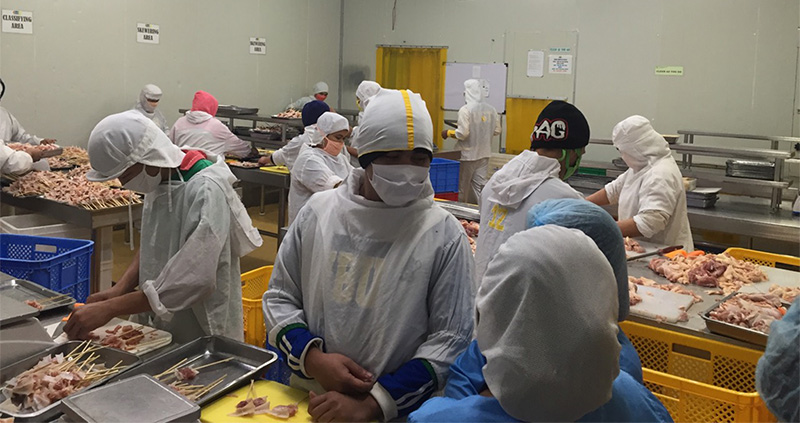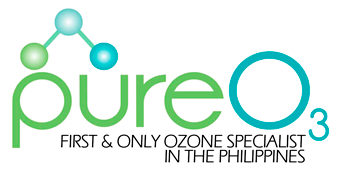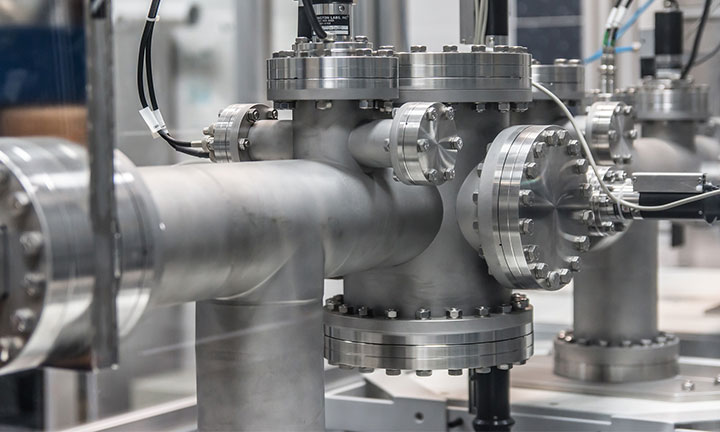Chicken Dressing Plant
Bacterial contamination (such as salmonella, Campylobacter, Pathogenic Escherichia coli and the like) is the primary concern in the food industry, and even the smallest amount of these came in contact to market meat it can cause illness to the comsumer. In this reason guidelines and procedure had been tailored to give solutions to this needs. Ozone, invented in solution to this and becoming more widely used in farms and factories, and even in commercials, hospitals and residentials to prevent contamination. Ozone becomes more effective to the users and consumers because of its reactivity, effective in sanitizing agent, elliminates a larger percentage of microorganisms than convensional disinfectants such as chlorine and formaldehyde.

Advantage
Ozone is the perfect solution for the Poultry Processing Industry, for plant cleaning, disinfecting, and sanitizing. An effective agent of against Listeria, E-Coli, Salmonella, Hepatitis, Cholera, and other bacteria and pathogens.
Ozone is the most effective antimicrobial agent known. It kills E-coli 3,125 times faster than chlorine, and it converts into ordinary oxygen after the process, leaving no chemical residuals behind.
Ozone can be dissolved into water just as chlorine and other chemicals ctan be. In many plants ozone injection systems that provided aqueous ozone may already be in place for use on food products for anti-microbial intervention.
Feature
Ozone Air Clean Systems
- Provide low-level ozone which can be used in a gaseous form to help eliminate mold, fungus, bacterial growth and mildew in areas like cold storage, processing areas, and holding rooms.
- Destroys pathogens by attacking and oxidizing the cell walls of the organism; the mucous membranes.
Gaseous Ozone
Ozone can also be used in the gaseous form to disinfect and sanitize areas. While actual bio-films will not be removed with gaseous ozone, there are applications where this may be a suitable solution. Many applications do not allow for water to penetrate locations where bacteria may reside and cause future cross-contamination. Gaseous ozone has been used for many years for odor control, mold remediation, and other disaster restoration services. The same action used to remove odor and mold spores can be used to kill bacteria and mold in industrial settings.
Companies are also using our Ozone Air Clean Systems. These systems provide low-level ozone which can be used in a gaseous form to help eliminate mold, fungus, bacterial growth and mildew in areas like cold storage, processing areas, and holding rooms. Ozone destroys pathogens by attacking and oxidizing the cell walls of the organism; the mucous membranes.
It doesn’t matter whether they are gram-positive or gram-negative. Whether they are spores, whether they are active, or whether they are amoeba-types (or microorganisms). The pathogens are all comprised of double-carbon bonds to hold the molecular structure together, and any microorganisms exposed to ozone will not just become benign in the water, but instead it will be completely evaporated. That’s because ozone will continue to break that molecular chain down until it’s nothing but carbon dioxide and water.


